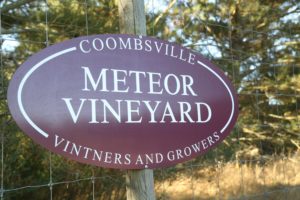
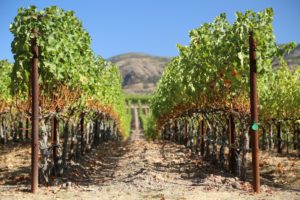 Meteor Vineyard is a 40 acre site (22.58 acres planted on site of former pasture land) in the heart of the Coombsville region located just east of the town of Napa planted almost entirely to Cabernet Sauvignon on a variety of clones and rootstalks. A small 1/3 of an acre with two tiny blocks is planted to Petit Verdot. This land used to be part of Nathan Coomb’s holdings, the founder of the city of Napa. Even during its early years (10th leaf at the time of our original visit to the property) its grapes had already attracted a fine pedigree of Napa winemakers. Winemaker Philippe Melka has used the site for several of his projects; in addition, grapes have been used by Etude Winery, Vineyard 29 and Favia. Besides being an ideal area to grow wine grapes this is also a very scenic part of the Coombsville region with views looking down towards the southern end of the valley.
Meteor Vineyard is a 40 acre site (22.58 acres planted on site of former pasture land) in the heart of the Coombsville region located just east of the town of Napa planted almost entirely to Cabernet Sauvignon on a variety of clones and rootstalks. A small 1/3 of an acre with two tiny blocks is planted to Petit Verdot. This land used to be part of Nathan Coomb’s holdings, the founder of the city of Napa. Even during its early years (10th leaf at the time of our original visit to the property) its grapes had already attracted a fine pedigree of Napa winemakers. Winemaker Philippe Melka has used the site for several of his projects; in addition, grapes have been used by Etude Winery, Vineyard 29 and Favia. Besides being an ideal area to grow wine grapes this is also a very scenic part of the Coombsville region with views looking down towards the southern end of the valley.
This is more of the southern range of Cabernet Sauvignon in Napa Valley, in addition to vineyards in Carneros, near American Canyon and in Jamieson Canyon. Coombsville is among the cooler parts of the valley and is a region strongly influenced by the cooling effects of the San Pablo Bay. During the summer fog often moves up and down this region like waves in the sand, albeit much slower. At night the fog moves in from the south and tends to cover the entire area but then usually burns off by mid to late morning. There can certainly be heat spikes in the southern part of the valley but on the whole, this is a fairly stable growing climate that tends to create long hang times with even ripening conditions.
Producers in Coombsville tend to be small and family owned and none of the wineries located here are open to the public by walk-in. A small vineyard located in this part of Napa Valley produces what is typically Napa’s most expensive bottle of wine, bottled under the Ghost Horse Vineyards label. Coombsville originally was thought to be to cold to grow Cabernet Sauvignon. Vineyards have proved this thinking wrong and this variety is now highly sought after by a number of premium producers who are looking to make elegant wines with true varietal characteristics. Most of the Cabernet Sauvignon in this AVA is grown close to the edges of the hills where the micro climates are slightly warmer than others parts of the region.
The site is special with its rich geological history and diversity of exposures. Coombsville used to be part of a volcano’s caldera; at one point, a crater lake covered what is now the Meteor Vineyard property. The vineyards take advantage of the cooling marine breezes blowing in from the south and the accompanying fog in the mornings, usually burning off by late morning during the growing season.
From a vineyard perspective, this is a valuable part of Coombsville; nearby neighbors include Rewa Vineyard, Sodaro Estate and a very short distance down the road, Farella Vineyard. Incidentally it was Tom Farella who wrote the the proposal for naming Coombsville and ultimately gaining its sub appellation status in December 2011.
And the gorgeous house on the property is built of rammed earth, a type of construction that is conducive for keeping the interior warmer during cool months and cooler during warmer months. Several other rammed earth buildings in Napa Valley include their winemakers Dawnine & Bill Dywer’s home, Long Meadow Ranch’s physical winery and a house on Elm Street next to the Napa Women’s Club in downtown Napa. Wing Canyon Vineyard on Mt. Veeder used to have both a rammed earth home and winery but unfortunately both burned down in the 2017 fires. An old grove of oak trees grows here, one of which has been identified as being nearly 500 years old.
Meteor Vineyard is owned by Barry (graduate of Rutgers University) and Tracy Schuler, east coast natives who fell in love with the wine country many years ago. They purchased this property in 1998. The name Meteor is fittingly based on an early design program called Medior, Inc., a multimedia development company based in San Mateo that Barry and Tracy co-founded with David Goldman. Their services were in shopping, music, publishing and entertainment utilizing CD-ROMS (remember those?!). When we were running a small ISP in the mid to late 1990s there were still 3½-inch, high-density floppy diskettes being used. We recall this was a major update from the flexible floppy disks we got started on when we were in the days of very slow dialup internet. Medior eventually worked with Apple Computer Inc and Redgate Communications, in the process launching one of the early online shopping cart services. The company was later sold to AOL for stock transactions.
And after the sale of Medior, Schuler transitioned to AOL soon becoming president of its Interactive Services group in 1998 and played an important role in simplifying their online services.
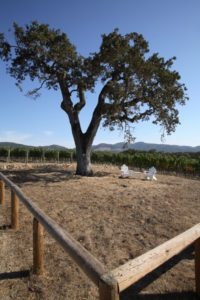
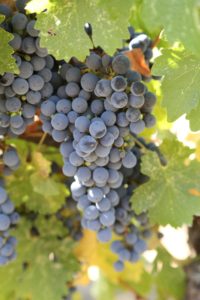 And remarkably several other future Napa Valley winery or vineyard owners worked at Medior including Goldman who would later plant and develop the Dead Fred Vineyard, also in Coombsville. One of their early employees, Eric Risch (back when there were only 11 employees) would eventually become General Manager of Pellet Estate in St. Helena and co-founded DoublePlus Wines with winemaker Tom Rinaldi. And one of the employees they hired for business development was Barry Waitte, the founder of Tamber Bey Vineyard, based in Calistoga.
And remarkably several other future Napa Valley winery or vineyard owners worked at Medior including Goldman who would later plant and develop the Dead Fred Vineyard, also in Coombsville. One of their early employees, Eric Risch (back when there were only 11 employees) would eventually become General Manager of Pellet Estate in St. Helena and co-founded DoublePlus Wines with winemaker Tom Rinaldi. And one of the employees they hired for business development was Barry Waitte, the founder of Tamber Bey Vineyard, based in Calistoga.
As with many others who have come to the valley the Schuler’s original intent was not to end up in the wine business (although they had been collectors of fine wines for many years) but when you acquire unplanted pastureland and have a property surrounded by already proven vineyards, it’s hard to resist the “wine bug”. Barry is a former chairman and CEO of America Online from 2000 to 2003 who still is very involved in the high-tech world both as an entrepreneur and as an investor. He was a keynote speaker at the Wine Blogger Conference in Santa Rosa in 2009.
Meteor Vineyard was planted in 1999 by Mike Wolf, a veteran of some of Napa Valley’s top vineyards. Mike originally worked for the Beckstoffer’s (the largest and most prominent vineyard management company in Napa Valley). He has over 35 years’ experience in the industry. He obviously spent a fair amount of time in the Coombsville region as we have met with several vintners in Coombsville whose vineyards he managed.
Wolf has since retired and sold his business to Domenick Bianco, former head viticulturist for Joseph Phelps’ properties in both Napa Valley and Sonoma County. Bianco was already working with Wolf prior to the sale of the company.
After planting the vineyard, the Schuler’s initially sold grapes to a limited number of premium producers; it was in 2003 they first sold grapes to Bill and Dawnine Dyer for their own label, Dyer Straits Wine Co. Dawnine crafted some wine from this vintage for Barry and Tracy. After trying the wine, they were impressed by the resulting balance in the bottle and decided to produce wines under Metor. In 2004 they only made a barrel which was never released; 2005 was their inaugural vintage.
The vineyard site is situated on gentle rolling hills planted on volcanic ash-based soil; the property features excellent drainage, always an important component of a vineyard. One unique feature of the property features an ancient river channel. The remnants of this channel are found in the rounded rocks which are spread throughout the vineyard soils. There was obviously water action on the property at one point but today there are no nearby creeks or steams. Winemaker, Dawnine calls this vineyard a “natural site” as in it does not need a huge amount of manipulation and support to produce high quality grapes – in other words, these soils already naturally have the components to produce superb wines.
Select Wines
Today Meteor focuses on two very limited production wines, the Estate Cabernet Sauvignon typically representing all of their Cabernet Sauvignon clones (usually around 700 cases) and the Special Family Reserve (usually around 100 cases) which usually focuses on just one clone – typically Clone 7. Only the highest quality free run juice is used in their wines and each Cabernet Sauvignon clone is always fermented separately until the final blending decisions.
The 2005 Meteor Vineyard Estate Cabernet Sauvignon shows a beautiful, elegant and floral based nose, spiced with violet and lavender aromas and just a hint of cocoa. There is also a dried floral component including rose petal. The mouth feel is rounded, and the palate is intense yet refined and balanced at the same time; it shows red and darker fruit including cherry. The finish has significant power with broad dusty tannins, a note of tobacco as well as dark fruit that lingers for quite some time.
The 2006 Meteor Vineyard Estate Cabernet Sauvignon is a bigger wine than its older brother. It is very dark in the glass with notes of dark chocolate, a note of earthiness and blackberry on the bouquet. The entry is fairly soft but builds in intensity rather quickly by mid palate. This is an unparalleled example of what cooler Coombsville fruit can do by creating a wine with some serious power yet at the same time retaining its balance. This is a wine one would almost suspect comes from a vineyard further up valley. Like the 2005 this wine has an intense long-lasting finish. The tannins are chewy, broad and expressive of the terroir as they reveal a dusty and earthy quality.
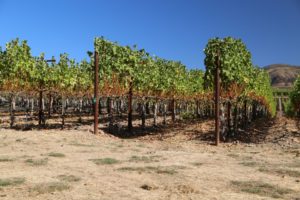
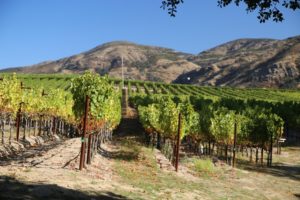 The 2005 Meteor Vineyard Special Family Reserve showcases both their vineyard as well as clone 7, which is planted entirely on St. George rootstalk, a proven rootstalk that has been in use for many years (100% varietal Cabernet Sauvignon). The bouquet is alluring with notes of brown chocolate, black fig and baking spices. The initial mouth feel is smooth and supple with delicious flavors of dark fruit including black cherry. The finish is well structured and lingers beautifully leaving notes of dark berry fruit on the palate.
The 2005 Meteor Vineyard Special Family Reserve showcases both their vineyard as well as clone 7, which is planted entirely on St. George rootstalk, a proven rootstalk that has been in use for many years (100% varietal Cabernet Sauvignon). The bouquet is alluring with notes of brown chocolate, black fig and baking spices. The initial mouth feel is smooth and supple with delicious flavors of dark fruit including black cherry. The finish is well structured and lingers beautifully leaving notes of dark berry fruit on the palate.
These wines have rich color, complex layered aromas, an expressive note of earthiness from the vineyard as well as showcasing intense flavor. Meteor’s wines, while showing rich and layered fruit are not only about this characteristic but they also feature firm structure and balance. These wines are certainly built to age and appeal to serious wine enthusiasts as well as long term collectors.
2014 marked the first vintage of the Clone Project which is sold via a three pack; this very limited production offering focuses on three wines, each one made entirely from one clone of Cabernet Sauvignon including Clone 4, Clone 7 and Clone 337.
NOTE: this section of this review has been identified as needing a major update including tasting notes for current release wines. And as of our latest update to this review, the Metor Vineyard property is currently for sale.
—
The wine is primarily sold direct through their allocation list but is also selectively distributed within California. can sometimes be found locally at ACME Fine Wine in St. Helena as well as several area restaurants including at Meadowood, the French Laundry and Auberge du Soleil. The best way to acquire their wine is via their mailing list (still open at the time of this review). For more information, visit: www.meteorvineyard.com
The following photos are provided by Meteor Vineyard:
Blue Oak School, Napa
In 2002 Barry and Tracy, David Goldman and Lisa Cort founded Blue Oak School as a K-4 school with just 70 students; today this independent charter school operates two locations in the city of Napa, one in downtown on Polk Street (the original campus and elementary school) a second one (the middle school) across the street located on Seminary Street.
Their main campus used to be located north of downtown on Hayes Street, but this property was sold to the non profit Mentis who moved their wellness operations here from their prior location on Franklin Street. The modern state of the art location on Seminary Street opened for classes in the fall of 2024. It 24,000+ square feet features 8 classrooms, a 10,000 square foot gymnasium and a culinary center. There is no parking or pickup or drop off areas on campus – rather this is available via surrounding city streets. A prominent metal sculpture of an oak tree, created by artist Mikey Kelly, frames one part of the building on the Seminary side of campus.
Since Blue Oak School originally opened it expanded to now being a K-8-day school with more than 170 students between the two campuses. The first eight grade class graduated in 2007; over the years graduates have attended numerous prestigious colleges around the country.
The school is the only non-denominational K-8 School in the Napa Valley with a full accreditation from the California Association of Independent Schools. The building at the Polk Street location was originally purchased by Schuler and Cort in 2000. It has a long history of serving education; the site was originally home to the one-room Polk Street School which opened in 1879 and in 1909 housed the Washington Primary School, designed by Napa architect Luther Turton who designed other prominent local landmarks including the Migliavacca Mansion, the Noyes Mansion (now used by the Wine Spectator for offices) and the Goodman Library.
This building previously housed the Napa County Agricultural Commissioner and University of California Cooperative Extension Service.
And since this is a wine website, and Meteor Vineyards is located in Coombsville, for reference, there is a Blue Oak Vineyard, also located in Coombsville. The blue oak (quercus douglasii) is native to California and grows in the coastal foothills including in Napa Valley.
Blue Oak Elementary School
Blue Oak Middle School

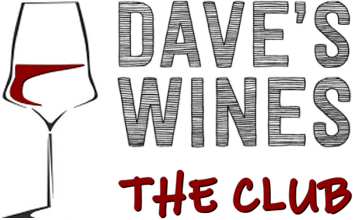




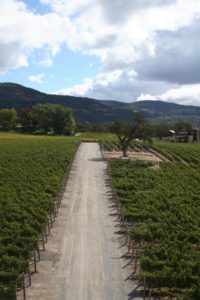
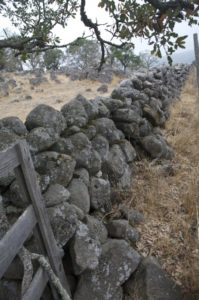
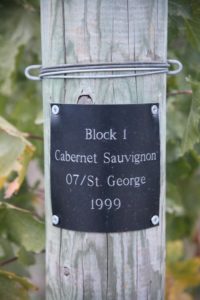
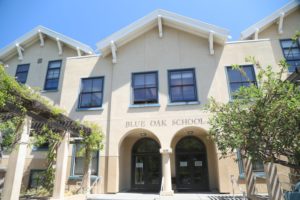
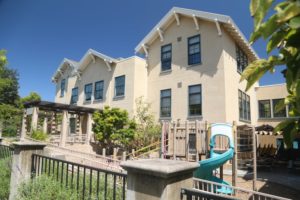



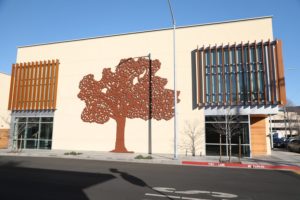
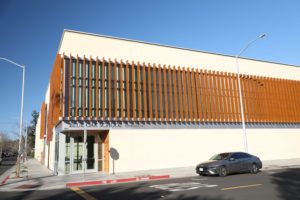
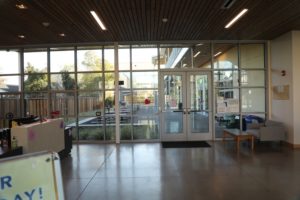
Leave a Reply